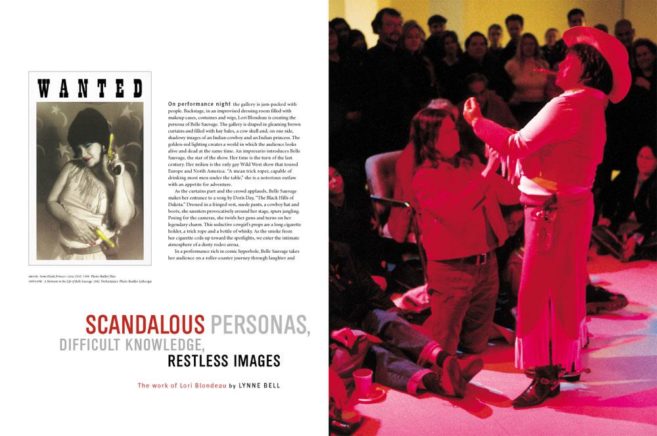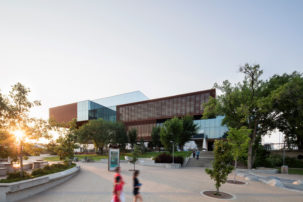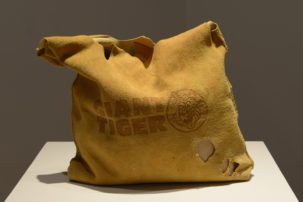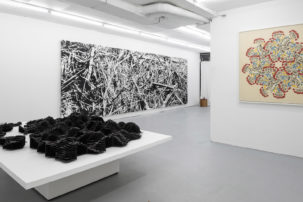Lori Blondeau’s show at the University of Saskatchewan’s two College Art Galleries is titled “Grace: A Survey.” Curated by Leah Taylor, “Grace” brings together 20 works made or performed between 1996 and 2018. The exhibition is timely, recognizing the career of an individual whose work as an interdisciplinary artist and long-time director of TRIBE Inc. has deeply altered the landscape of Saskatchewan art. In August, Blondeau leaves the province to take up a tenure-track position at University of Manitoba.
The artist’s iconic, early photographs are present, including: COSMOSQUAW (1996), in which the Cree/Metis/Saulteaux artist appears as a magazine cover girl, replete with red dress and big hair, advertising “10 Easy make-up tips for a killer Bingoface!”; and The Lonely Surfer Squaw (1997), where she poses coyly in a fur bikini next to a Styrofoam surfboard on the banks of the snowy South Saskatchewan River. There are several more examples of Blondeau’s playful and biting humour in photographs and video documentation of performances, the latter of which also showcase her talents as a storyteller and comic.
However, Taylor has balanced the artist’s comedic energy, giving ample room to elegant and elegiac installations of artworks in which Blondeau navigates the difficult terrain of family, history and identity under the persistent weight of colonialism. The show takes its title from one of these pieces: Grace (2006), a set of 14 colour photographs of Indigenous individuals hiding their faces behind hands, first with their palms held to their eyes and next with their palms facing outward. These are beautifully ambiguous. The individuals—all but anonymous—may be asking for blessings, giving thanks, denying consent or refusing advice. The viewer’s own biases and responses determine the meaning.
Many of Blondeau’s performances have been presented more than once, each new context altering their interpretation. Video documentation of States of Grace (2007), performed in Venice, Italy, shows Blondeau seated and motionless in a long, bronze gown—a monument, witness and oracle—as her voice emanates through a speaker, sharing stories of trauma and recovery. In Venice, Blondeau gazed out across a large canal toward the island of Giudecca. Watching the video, I could not help but think of the enormous distance that her work has covered in two decades. Her stillness in this video, and in other performances, is deceptive. It masks a persistent restlessness and determination to traverse adversity and difference (both political and cultural) in a search for justice.
The show ends, upstairs, where it began, with the stage and props left from her opening night performance of Are You My Mother? (2018). The artist sat on a chair on an Astroturf rug, surrounded by a wire fence, whittling a stick of poplar and talking to the audience about her mother’s trauma at residential school. She first performed this as an MFA student, well before the Truth and Reconciliation Commission. In its restaging at the same university now engaged in the messy and flawed process of Reconciliation, it resonates differently, with less echo and more absorption.
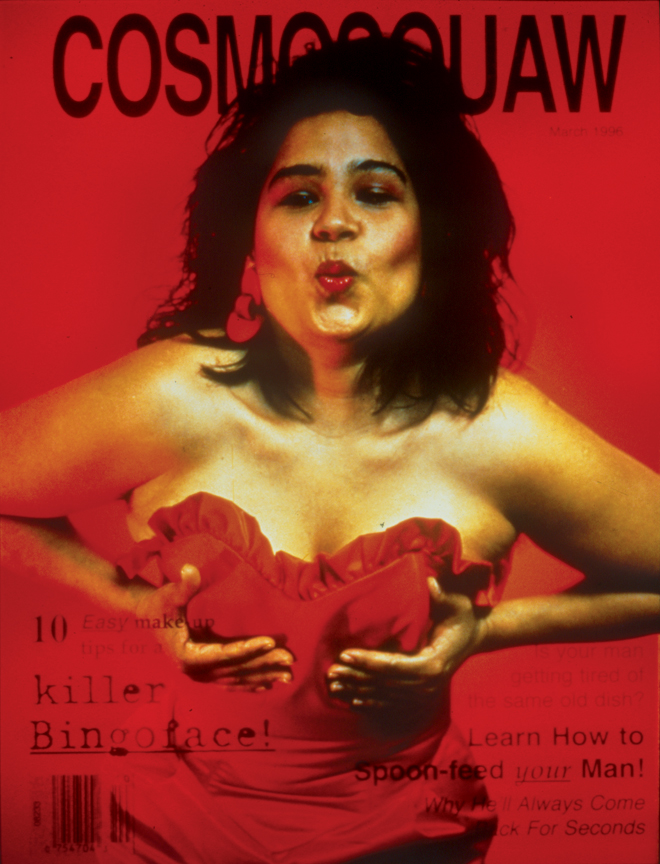
Lori Blondeau, COSMOSQUAW (detail), 1996. Duratrans in lightbox, 27.9 x 22.8 cm. John Cook Collections. Photo: Bradlee Laroque.

Lori Blondeau, Lonely Surfer Squaw, 1997. Duratrans in lightbox. The Mendel Art Gallery Collection at Remai Modern. Purchased with the assistance of the Canada Council for the Arts, 2008. Installation view at College Art Galleries.

Lori Blondeau, Grace, 2006. Series of 14 photographs, 50.8 x 50.8 cm each. Installation view at College Art Galleries.

Lori Blondeau, Are You My Mother? (performance documentation), 2018. Courtesy the artist. Photo: Tenille Campbell.

Lori Blondeau, Are You My Mother? (performance documentation), 2018. Courtesy the artist. Photo: Troy Gronsdahl.

Lori Blondeau, Are You My Mother?, 2018. Mixed-media performance installation. Courtesy the artist. Installation view at College Art Galleries.

